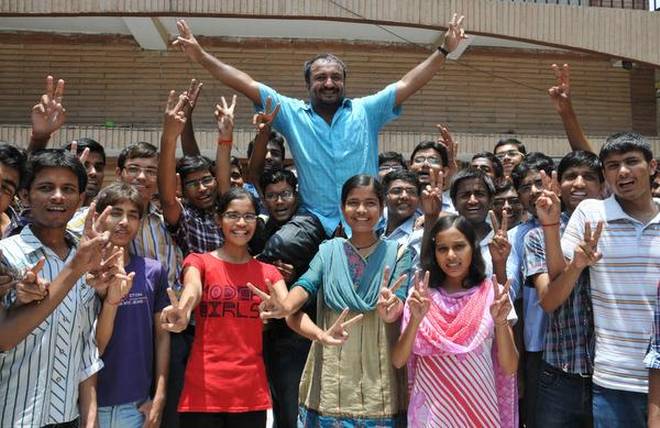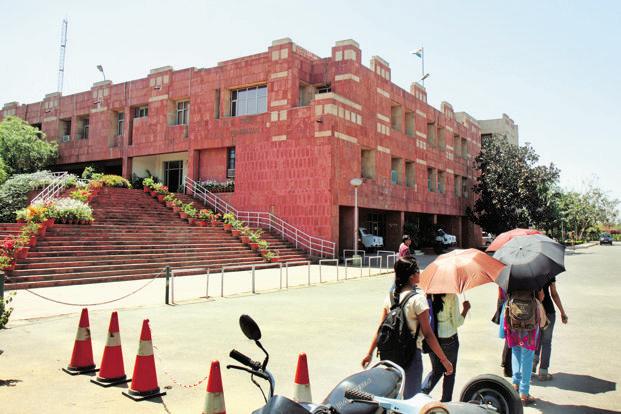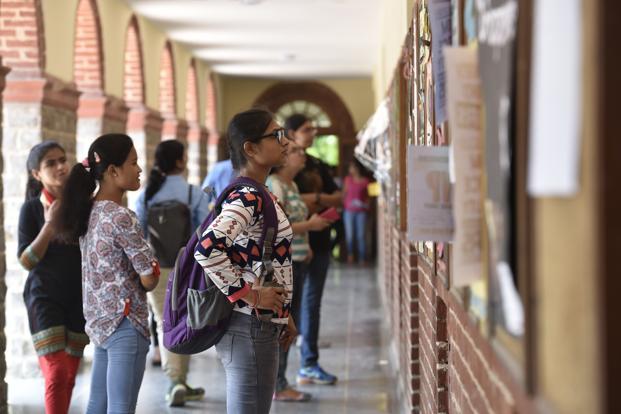Bihar’s crumbling school education system has given birth to coaching institutes that train students to ace competitive exams
Aryabhatt Super 30, Triveni Super 30, Rehmani Super 30, Abhyanand Super 30, ONGC Super 30, Rehman Super 30, Atom Super 30—huge billboards and signboards screaming out these names can be seen all over Patna, on walls, and in large advertisements in local newspapers. Newcomers to Bihar’s capital can be forgiven for wondering whether Super 30 is a rocket, a potency pill or dental floss.
Of course, it’s none of these, but merely take-offs of the fantastically successful original Super 30 started by Anand Kumar in 2002 as a coaching institute for poor students to help them crack the famously tough engineering joint entrance examination called IIT-JEE. In the past 15 years, 396 of a total 450 of Kumar’s students have found admission in the country’s most prestigious engineering colleges. That’s a success rate of 88%. And this year too, all 30 of his students have come out with flying colours in the test.
The proliferation of these institutes is a natural fallout of the sub-par quality of schooling in Bihar. This year, nearly half the students failed to pass Class X and only 35% cleared the Class XII board examinations.
“The situation is really bad here in Patna. Coaching centres have mushroomed because the government has failed to provide quality education. The private sector is filling the vacuum left behind by the state’s education sector,” said Nawal Kishore Choudhary, economist and former Head of Department at Patna University. “First, higher education collapsed, now primary and secondary education too are on the brink. What option does the hapless student have besides enrolling himself at a coaching centre?”
Students wait outside an examination venue to appear for an entrance test. | Photo Credit: Ranjeet Kumar
Revenue generators
Patna has hundreds of these institutes that promise to train students for every competitive exam out there, though the majority applicants are for engineering and medical entrance coaching. These days, the three most crowded coaching institutes in the city are Mentors, Vision Classes and Tapsya. Besides, established names such as Brilliant, Allen, Akaash and Bansal have also opened branches in Patna, in swanky buildings located at prime locations in the city. These coaching centres are the top revenue generators for local newspapers, pumping in crores in advertising every year.
The tens of thousands of students who enrol in these institutes get no share of the riches though. Many of them live in deplorable conditions in hostels attached to these institutes, mostly situated in squalid, fly-ridden lanes and by-lanes.
At one such hostel in the Naya Tola area in Patna, we found five students sharing a single windowless, unplastered room with a rickety ceiling fan and lean wooden cots. The students had rolled up their bedding to squat on the cots and study. Droplets of sweat dripped down their foreheads and bare backs. In the by-lane right outside, it was a cacophony of blaring horns, noisy hawkers, and loudspeakers from a nearby temple. “It’s worse during summer but we carry on. There is no other option,” said Sanjay Kumar from neighbouring Nalanda district.
This desperation to join a reputed college and earn a professional degree is not new or strange for many of these students. It is their only chance at climbing up the social ladder and making a decent living. And nobody understands this better than Kumar himself. “I know what poverty means and how it comes in the way of those who want to study and excel. It’s my dream that one day Super 30 will grow to become Super 3000,” he says, sitting in his Shanti Kutir residence in Patna’s Mithapur locality.
Started in the year 2002, Kumar’s coaching institute is a class apart and provides free education and lodging to underprivileged students from the State. He also runs another institute, Ramanujam School of Mathematics, for general students and charges them a meagre fee. The man who once delivered homemade papad to shops and homes, on his creaky bicycle, is today saviour and guardian angel to thousands of students eager to study and make a difference to their lives.
This year, Kumar plans to admit 100 students, including from the neighbouring States of Uttar Pradesh, Chhattisgarh and Jharkhand. “I hope it inspires others too to follow suit,” he says. “I want more students to get a chance to study, poverty notwithstanding.”
Role model
Kumar’s successful students too seem intent on following in their teacher’s footsteps. Shubham Kumar Gautam, who went on to study at IIT-BHU, has given up his plush job at an MNC and teamed up with friends to work in the education sector in Varanasi and Delhi.
“Anand sir taught us to give back to society and it’s been a lifetime lesson for me. I want to become like him,” Gautam says. Another student, Anup Raj, an IIT-Mumbai alumnus, today runs a healthcare service provider, PSTakeCare, in Mumbai, with 100 employees on its rolls. Kumar’s success story is now set to reach wider audiences. Bollywood star Hrithik Roshan has been signed on to portray Kumar in an upcoming film titled Super 30. Last year, a book on Kumar, jointly written by Canada-based psychiatrist Biju Mathew and Patna-based senior journalist Arun Kumar, was released.
As Bihar’s schooling system struggles to come to terms with the changing milieu of higher education and offer its students the best of opportunities, private institutes are only broadening their scope.
As huge billboards with pictures of successful students continue to mushroom across Patna, and newer initiatives—Genius 40 and Fantastic 50—take root on every street corner, eager students from across the State and outside make a beeline to these institutes that promise them a bright future.
[“Source-thehindu”]









 The best workplaces excel in recognition. Photo: iStockphoto
The best workplaces excel in recognition. Photo: iStockphoto








